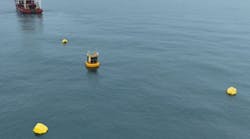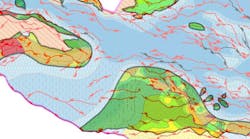Offshore staff
OSLO, Norway – Shell has signed a 'Data OnDemand' agreement with PGS, allowing its exploration teams to improve access to seismic data and speed up workflows.
PGS has developed the cloud-based digital asset management service specifically for seismic data.
In 2022, Shell also signed a MultiClient Library Access agreement with the company.
Nathan Oliver, Executive Vice President of Sales & Services at PGS, said: “Our customers want accelerated access to data in order to make time-critical decisions. Being able to move quickly and reduce risk is a competitive advantage in a fast-changing energy landscape.”
PGS has also made available to a wider audience data from its SNS Vision project which is designed to assess the remaining exploration potential and CO2 storage opportunities in the Southern North Sea gas province.
The data is designed to support exploration or post-salt CO2 storage potential in the Triassic Bunter sand formation and near-field exploration targets.
SNS Vision covers both open exploration acreage and eight recently awarded Carbon Capture and Storage (CCS) licenses. In these cases, the goal is to provide consistent depth-migrated regional data for screening and evaluation of the carbon storage site.
Within the project, 26 existing datasets have undergone modern depth imaging reprocessing, including a 2 millisecond broadband processing, de-ghosting, de-multiple flow said to be optimized for shallow water, and depth migration based on full waveform inversion (FWI).
The results, PGS claims, have brought improved resolution over a near 12,000-sq km area.
The company has addressed imaging of complex geology and salt tectonics via depth velocity model building (VMB), tomography, FWI updates, and Kirchhoff pre-stack depth migration (KPSDM). FWI, it adds, has resolved shallow features and revealed shallow salt and cap rock detail.
Following SNS Vision seismic reprocessing, the team conducted an automatic regional horizon interpretation and were able to quickly interpret the volume, in particular CO2 storage horizons in the Bunter sand formation interval.
02.22.2024





